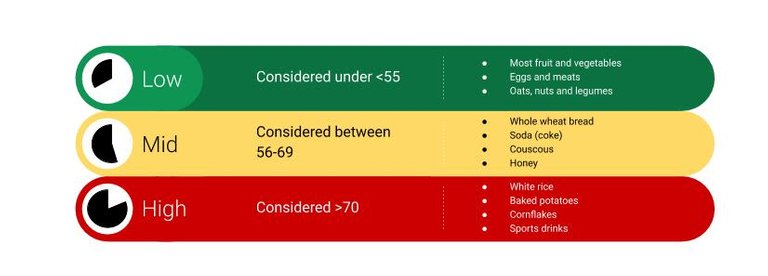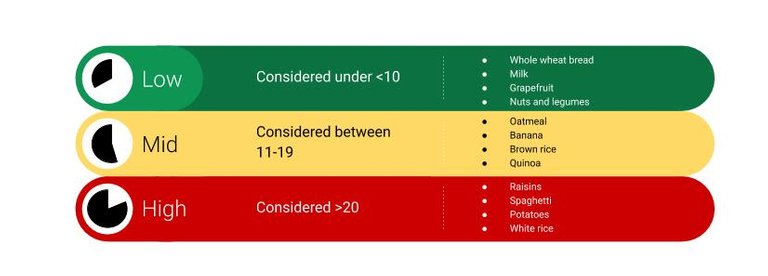Carbohydrates part 2: The good, the bad and the ugly.
In part 1 of this series, I went through the breakdown of different types of carbohydrates and where you might find them in your diet. In this next section, I would like to move more toward applied nutrition. So taking this knowledge and implementing it into your diet to cater toward your goals. Carbohydrates are a broad group and have caught a lot of flak over the years so feel free to ask questions if you feel I need to clarify some things.
Carbohydrates: The facts
- 4 kcal per g of digestible carbohydrate (see part 1 for the types).
- Functions of digestible carbohydrates include providing energy, protein sparing, prevention of ketosis
- Functions of indigestible carbohydrates (see part 1 for types) include promoting bowel health, slowing glucose absorption, inhibiting cholesterol absorption, reducing the risk of obesity contributing to satiety.
Choosing your carbohydrates
So the facts seem quite straightforward overall, all carbs are made equal right? Well, whilst from an energy perspective that is strictly true, our bodies don’t react the same way to different types of carbohydrates. An example being a bowl of jelly beans aren’t going to have the same effect as a bowl of fresh berries. Essentially, the body breaks down carbohydrates into the monosaccharide glucose for use within the body but the rate at which it does varies from source to source. This has serious ramifications for health with a host of diseases and dysfunctions including diabetes type 2, and cardiovascular diseases. In order to capture this better, researchers developed two tools, the glycemic index (GI) and glycemic load (GL).
Glycemic Index (GI)
The more popular of the two tools, it is the blood glucose response ratio to a given food compared against a certain benchmark (generally glucose or white bread). This can be affected by a number of factors such as the method of cooking, the physical structure, the accompanying foods etc. It results in a given value that broadly divides into three categories, low, intermediate and high GI foods. An important aspect of this calculation is that the serving size is uniformly set at the quantity that would give 50g of carbohydrates. This can drastically reduce the effectiveness of using GI as a guide due to the unrealistic portions.

Glycemic Load (GL)
This is calculated by taking the carbohydrates of a food in 1 serving and multiplying it by its GI and then dividing it by 100. What this means in reality is a greater reflection of the bodies’ blood sugar response to a food. This can mean foods that have a relatively high GI end up scoring lower on the GL scale due to what constitutes a realistic portion size.

“Ok Tom, so what does this mean for me exactly, do I want high or low scoring foods?”
Well, like with anything in nutrition it depends on what you want to achieve, both types of foods can have their uses. However, for general health purposes, it is often a safer bet to emphasise lower GI and GL foods in the diet. In some specific cases, you may want to take advantage of quicker absorption for performance or the post-workout muscle-building window. I will write more about tailoring your carbohydrates to your needs in part 3.
References
Glycemic Index and load
https://www.ncbi.nlm.nih.gov/pubmed/18358253
Glycemic load and relation to development of diseases
https://www.ncbi.nlm.nih.gov/pubmed/12828192
Low GI diets and the impact on health
https://www.cambridge.org/core/journals/proceedings-of-the-nutrition-society/article/lowglycaemic-diets-and-health-implications-for-obesity/8CFA8789A9040D8C25FD9385F8F5EF8D
Low GI diet vs calorie restricted diet on health factors
https://www.ncbi.nlm.nih.gov/pubmed/15883418
This post has been resteemed by @original.content.
Follow me to keep up-to-date with posts tagged #oc and the author on ocdb's follow list.
If you don't like this message, please reply
STOPand I'll cease notifying you ASAP.Powered by witness untersatz!
This post has been resteemed by @original.content.
Follow me to keep up-to-date with posts tagged #oc and the author on ocdb's follow list.
If you don't like this message, please reply
STOPand I'll cease notifying you ASAP.Powered by witness untersatz!
Congratulations @thp88! You have completed the following achievement on the Steem blockchain and have been rewarded with new badge(s) :
You can view your badges on your Steem Board and compare to others on the Steem Ranking
If you no longer want to receive notifications, reply to this comment with the word
STOPTo support your work, I also upvoted your post!
Do not miss the last post from @steemitboard:
Vote for @Steemitboard as a witness to get one more award and increased upvotes!
This post has been voted on by the SteemSTEM curation team and voting trail. It is elligible for support from @curie and @minnowbooster.
If you appreciate the work we are doing, then consider supporting our witness @stem.witness. Additional witness support to the curie witness would be appreciated as well.
For additional information please join us on the SteemSTEM discord and to get to know the rest of the community!
Thanks for having used the steemstem.io app. This granted you a stronger support from SteemSTEM. Note that including @steemstem in the list of beneficiaries of this post could have yielded an even more important support.